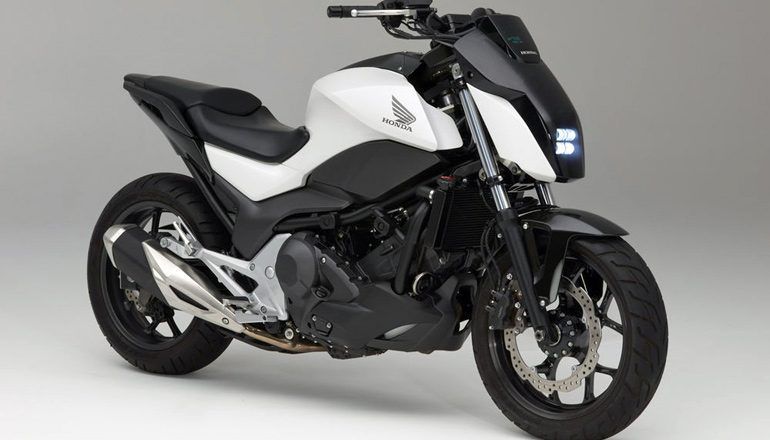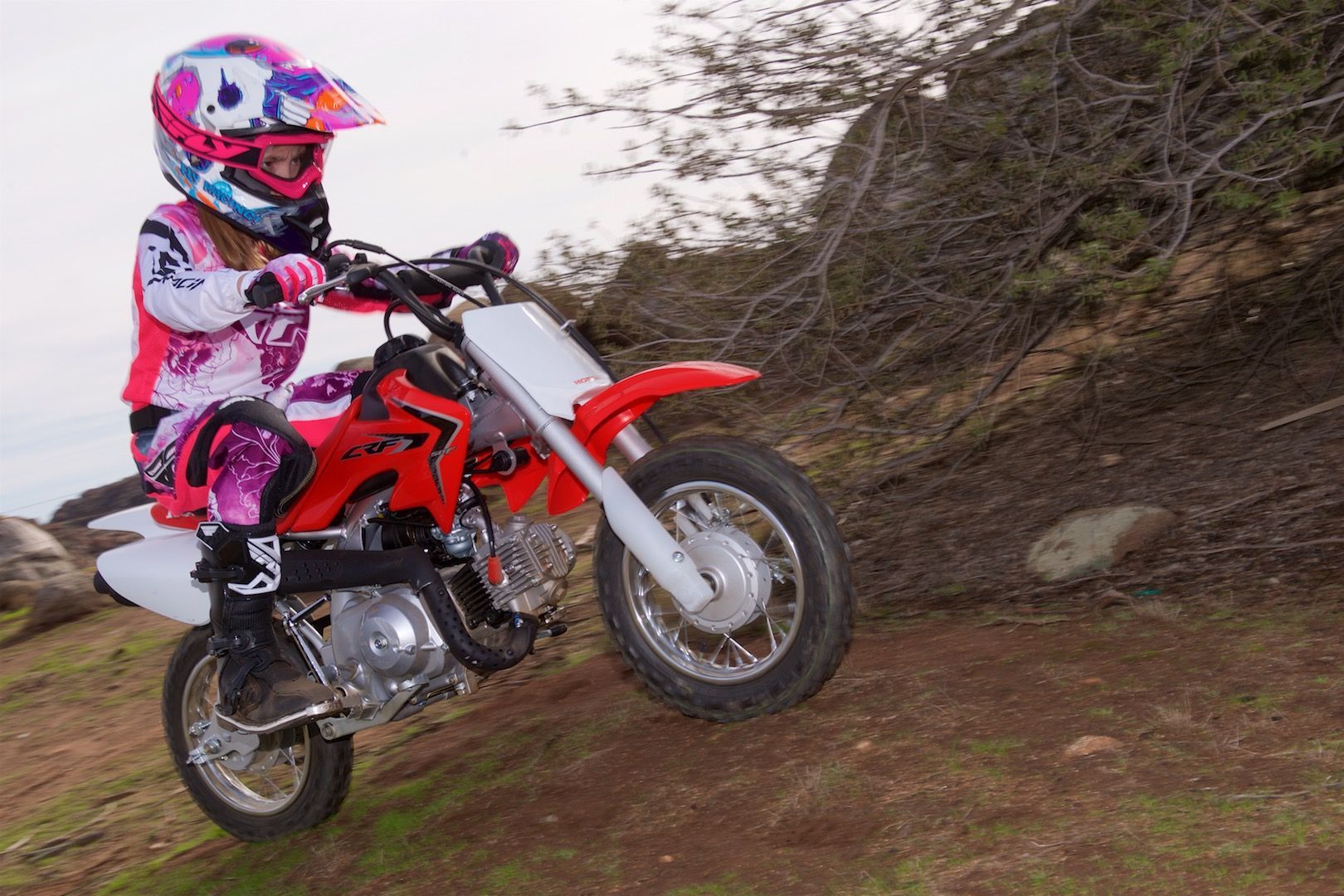The Rise of Rider-Assist
Compton, California, United States

A demonstration of Honda's self balancing tech. He doesn't appear to be enjoying "the riding experience"
The Rise of Rider-Assist
This week Honda unveiled a new concept motorcycle that is capable of self balancing. The concept's unveiling was at the 2017 CES trade show that's held annually in Las Vegas, giving companies a chance to show-off their latest technologies and products. Honda's self balancing technology, which was borrowed from their Uni-Cub Personal Transportation Device, is just the latest rider assist technology to debut for motorcycles. As more of these rider-assist features begin making their way onto new production bikes, it's becoming increasingly difficult not to have some concern for the direction in which these advancements are taking motorcycles.

Honda's self balancing concept
For the sake of the argument, let's start by breaking these rider assist technologies into two distinct categories: new rider assist features, and features to keep the ever-growing power of bikes in check. Low RPM assist and self balancing are features which appeal to new riders but arguably change the riding experience. The latter category, on the other hand, doesn't take any control away from the rider, but rather allows the rider to more easily access the awesome amount of power found on modern bikes without having to worry about a high side every other corner. These features come from professional racing that have trickled down to production models over time; they are features designed to further aid experienced riders. In this case the rider-assist feature actually allows the rider to push harder and get even more out of their machines.
One of the more universally challenging parts of learning to ride is getting comfortable coming to a complete stop, as well as getting moving from a standstill. Because this requires the simultaneous use of the throttle, clutch and shift lever, it can take a good deal of time for many new riders to master. Armed with this knowledge and almost certainly having conducted a myriad of focus groups and market research tests, some manufacturers have begun building bikes with features like low-RPM assist to remedy a new rider's lack of experience. Honda's new self balancing bike also falls into this category. The problem I have with these features is that they remove an aspect of control from the rider, making it a more passive experience in the midst of one that should be anything but.

Without electronic rider-assist tech, Ducati's Andrea Dovizioso wouldn't be able to control the roughly 250hp bike
Several months ago BMW released a futuristic concept of what they described as "What motorcycles will be like in 100 years". It too was self balancing and featured a handful of rider assist technologies, ultimately claiming that it is a "crash proof" bike. Apparently the bike can assume control in emergency situations. Clearly nobody wants to crash, although the element of risk greatly adds to the overall thrill of the riding experience, but removing that possibility would have a profoundly negative effect on the riding experience and potential to evolve as a rider. The feeling of entering a corner a little bit too hot is all part of the fun. If there was no risk of crashing, riding would be far less exhilarating. (Not to mention far more people would partake). So with all these new safety features and technological advancements, what's the downside?

BMW's "Bike of the Future"
Riding a motorcycle means many different things to different people. There are, however, a few universal aspects of riding that apply to (almost) every motorcyclist.
Riding creates a sense of freedom and a sense of control, both made all the more exhilarating when coupled with the sense of risk that accompanies riding. Your life is in your own hands, and your input controls the bike in what's typically a hyper-focused experience that's about as far from passive as it gets. The emerging assistive technology removes a portion of the risk and necessarily the control as well, which may forever alter the true riding experience.
Although self-driving cars are coming closer and closer to becoming everyday fixtures on the road it would be a shame if motorcycles were to follow in the same direction and become more of an automated instead of a manual, controlled experience. While attracting new riders to motorcycles is vital to keeping the industry alive and well, for a host of reasons this simply doesn't feel like the "correct" long-term solution to a problem that debatably doesn't exist. Features like low-RPM assist don't aid new riders in their learning, if anything they slow down the learning process, as mastering clutch and throttle control may no longer be a skill that a rider is forced to learn in order to ride.
Below is a video of a rider testing a new Suzuki SV650's low RPM assist by riding with only his left hand.
Suzuki SV650 2017 low revs assist.
The same problem to a lesser extent lies in wheelie control and ABS. A new rider can jam the throttle wide open and grab as big a handful of front brake as they desire without suffering any consequences, such as locking the front tire or having the bike throw the rider onto their back. With this tech in place, it detracts from the learning process, limiting the development of a rider.
The most sustainable way to attract new riders is simply to offer a variety of attractive entry-level machines of all different categories, (something companies are, fortunately, currently doing in droves) allowing rookie two-wheelers to sharpen their skills on more forgiving bikes that do not include rider-assist technologies. Having said that, ABS isn't a bad idea for new riders (or any riders) although again, learning to brake properly without ABS is a valuable skill.
Learning to get the bike going is tricky. New riders will repeatedly stall their engine when learning, which may result in several unpleasant and embarrassing experiences, such as holding up traffic behind you at green lights (made all the worse if you filtered to the front of the cue while waiting), but it seems like a better alternative than never being forced to master the function. If children under the age of six can masted the skill on 49cc dirt bikes, why not allow an adult the same sense of satisfaction?

If she can figure it out, so can you...
Riding a motorcycle requires practice, years of it. Even the professionals are constantly learning and improving. Although the learning curve may deter some would-be riders from getting on a bike, the reality remains that, like any new skill, riding necessitates practice, and if someone wants to ride but isn't willing to invest the time and effort to learn, maybe they shouldn't.
As manufacturers continue to evolve their products and produce increasingly sophisticated equipment, it is important to preserve the feel of the riding experience in as unadulterated a state as possible.
I understand that it's subjective and I'm open to other people's views but part of the joy of riding, in my experience, has been learning new skills and then applying them to my riding. Just as I have never considered the act of putting my foot down at a stop to be that taxing, nor a complaint I've ever heard from new riders, or any other, for that matter, Honda's self- balancing concept feels like a fix to a problem that doesn't actually exist to begin with. Instead it threatens that feeling of fulfillment that comes from improving as a rider, a feeling which can't exist if there is no need to work at it. What do you think?
Ride safe.

If someone of this height can win Grand Prix's w/o needing a self balancing bike, surely nobody does
You must be logged in to comment
Login now
As much as I abhor the existence of this type of vehicle, I cannot help but admire and respect Honda's technical ability to produce such a wonder. There's the proof a revolution is coming. The auto industry is moving toward self-driving cars which could spell the end of the privately owned motorcycle. This technology keeps the motorcycle alive (barely) with Big Brother controlling our movements in the near future. The insurance industry is presently scratching their heads figuring how to administer liability for these types of vehicles as we speak. Thrilling times? Scary times? Hmm.